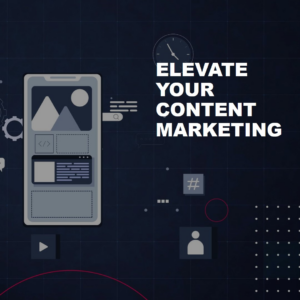Introduction:
Infographics have become a staple in content marketing strategies, offering a visually appealing and informative way to communicate complex information, data, and ideas to audiences. With their blend of graphics, text, and design elements, infographics have the power to engage viewers, simplify concepts, and drive engagement and shares across various platforms. In this guide, we’ll explore the art of creating engaging infographics for content marketing and how brands can leverage this versatile medium to captivate audiences and enhance brand visibility.
1. Define Your Objective:
Before diving into the design process, clearly define the objective of your infographic. Determine the key message or takeaway you want to convey to your audience and identify the target audience you’re aiming to reach. Whether it’s educating, informing, entertaining, or persuading, aligning your infographic with your marketing goals is essential for creating a focused and effective piece of content.
2. Choose a Compelling Topic:
Select a topic that is relevant, timely, and of interest to your target audience. Research trending topics, industry insights, or data-driven narratives that have the potential to resonate with viewers and spark curiosity. Consider addressing common pain points, answering frequently asked questions, or providing valuable insights and tips that add value to your audience’s lives.
3. Gather Data and Information:
Collect data, statistics, facts, and information related to your chosen topic from credible sources such as industry reports, surveys, studies, and research papers. Organize and analyze the data to identify key insights, trends, and findings that will form the basis of your infographic’s content. Ensure that the information you present is accurate, relevant, and visually appealing.
4. Design with Visual Impact:
Create a visually engaging design that captures attention and conveys information effectively. Choose a cohesive color scheme, typography, and layout that align with your brand’s identity and complement the content of your infographic. Incorporate eye-catching visuals such as icons, illustrations, charts, graphs, and images to enhance understanding and engagement.
5. Simplify Complex Concepts:
Use visual storytelling techniques to simplify complex concepts and make information more accessible and understandable to your audience. Break down data into digestible chunks, use concise and clear language, and organize content in a logical and intuitive manner. Highlight key points, trends, and takeaways to guide viewers through the infographic and keep them engaged from start to finish.
6. Add Context and Narrative:
Provide context and narrative to the data and information presented in your infographic to create a compelling and cohesive story. Use headings, subheadings, and captions to frame each section and guide the flow of information. Incorporate storytelling elements such as anecdotes, quotes, and case studies to add depth and relevance to your content.
7. Optimize for Sharing and Distribution:
Ensure that your infographic is optimized for sharing and distribution across various platforms and channels. Create multiple formats and sizes to accommodate different social media platforms, websites, and email newsletters. Include social sharing buttons and embed codes to encourage viewers to share your infographic with their networks, maximizing its reach and impact.
8. Measure and Analyze Performance:
Track and measure the performance of your infographic using analytics tools to evaluate its impact and effectiveness. Monitor metrics such as views, shares, engagement, and conversions to assess how well your infographic resonates with your audience and contributes to your marketing goals. Use this feedback to iterate and refine your infographic strategy for future campaigns.
Conclusion:
Infographics are a powerful tool in content marketing, offering a visually compelling and informative way to engage audiences, communicate key messages, and drive brand visibility and engagement. By following these tips and best practices for creating engaging infographics, brands can captivate their audience’s attention, simplify complex concepts, and enhance brand storytelling in a visually appealing and memorable format.




